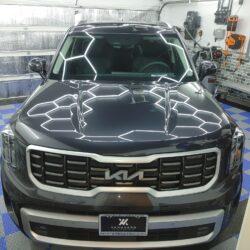The EV Surge: More Than Just a Trend
A decade ago, seeing an electric car on the road was a novelty. Today, EVs are mainstream—yet the momentum didn’t come solely from consumer enthusiasm. It’s the result of converging forces:
-
Regulation: Governments tightening emissions standards.
-
Innovation: Battery technology becoming lighter, safer, and cheaper.
-
Economics: Fuel prices and maintenance costs making combustion vehicles less appealing.
The big players—Tesla, BYD, Volkswagen, and Hyundai—set the tone early, but it’s the traditional manufacturers catching up that truly signal change. Ford’s F-150 Lightning and GM’s push into electric trucks show that EV adoption isn’t just for early adopters anymore.
Still, while the promise of zero tailpipe emissions is alluring, the road ahead is bumpy.
The Challenges Behind the Charge
1. Infrastructure Isn’t Keeping Pace
Let’s start with the most visible hurdle: charging infrastructure.
Urban areas are improving fast, but rural or suburban zones often lag behind. I’ve seen drivers struggle to plan long-distance trips, not because of range anxiety per se—but because of unreliable or occupied chargers.
Insider tip: Always check charger availability via apps before you set off on a trip. Many new EV owners assume charging stations work like gas stations—you just show up. That’s a recipe for frustration.
Fleet operators and city planners are starting to think strategically, but large-scale infrastructure still requires serious coordination between private investors, utilities, and governments. Until that’s solved, adoption will remain uneven.
2. The Battery Supply Chain Dilemma
Battery production relies heavily on critical minerals—lithium, cobalt, and nickel—most of which are sourced from a few countries. This concentration makes the supply chain fragile and politically sensitive.
Recycling programs and “second-life” applications for used batteries (like grid storage) are helping, but the logistics are still catching up.
One promising development: several automakers are now experimenting with solid-state batteries, which could be lighter, safer, and faster to charge. It’s not quite commercial-ready yet, but the breakthroughs are coming quicker than expected.
3. Maintenance Misconceptions
Here’s something I’ve noticed firsthand: many EV owners underestimate how different maintenance really is.
EVs have fewer moving parts, yes—but they’re not maintenance-free. Tires wear faster due to torque, brakes need regular checks (though less frequently, thanks to regenerative braking), and the cooling systems for batteries still require attention.
I’ve seen people skip cleaning and protective care because they assume an EV doesn’t need it. In reality, EV paint finishes and interiors can be more delicate due to new lightweight materials. For instance, as explained in this guide on auto detailing in Virginia Beach, professionals recommend using specific ceramic coatings to protect EV paint from UV degradation and road film buildup. It’s a small detail, but over time, that kind of care preserves not only aesthetics but resale value.
The Opportunities: Where EVs Truly Shine
1. Lower Operating Costs
When maintained properly, EVs save money in the long run. The energy cost per mile is significantly lower than gasoline, and routine maintenance is simpler. Fleet managers especially benefit here—imagine cutting down thousands in fuel and oil changes each year.
Insider tip: Charging overnight during off-peak hours can drastically reduce costs. Many utilities now offer special EV rates, but you have to apply for them—it’s not automatic.
2. A Catalyst for Innovation
The EV ecosystem is a hotbed for cross-industry collaboration. Energy companies, software developers, and automakers are forming partnerships that didn’t exist before.
For example, predictive analytics in EVs now help drivers plan routes that optimize battery health and speed. Software updates—once a rarity for cars—are now routine. This opens the door for continuous improvement without new hardware.
It’s also creating opportunities for smaller businesses. Independent mechanics are training for high-voltage systems, and detailers, transporters, and parts suppliers are adapting to meet EV-specific needs.
3. Environmental Impact (When Done Right)
There’s no denying the environmental benefits of EVs, but they’re not automatically “green.” The real advantage comes when charging networks rely on renewable energy and when recycling systems recover old battery materials efficiently.
Countries investing in both EV infrastructure and clean energy generation—like Norway and parts of California—are leading the way. The model shows that sustainable mobility is achievable, but only through an ecosystem approach, not isolated effort.
Common Mistakes in the EV Transition
Even seasoned drivers make simple errors that undermine their EV experience. A few I see repeatedly:
-
Ignoring software updates. These updates often improve range and performance.
-
Treating charging like refueling. EVs benefit from shorter, more frequent charges rather than full top-ups every time.
-
Overlooking tire pressure. The added battery weight means proper inflation affects not just safety but range.
Each of these is easy to fix, but they illustrate that switching to an EV isn’t just about changing cars—it’s about changing habits.
The Human Side of the Transition
There’s something fascinating about how technology reshapes behavior. I’ve seen skeptical drivers become EV evangelists within weeks, and I’ve also met early adopters who quietly went back to hybrids after a year.
The truth? Both experiences are valid. Transitioning to an EV isn’t a one-size-fits-all journey. Climate, driving patterns, charging access, and personal expectations all play a role.
What helps most is education—community workshops, local dealer transparency, and peer networks. In places where drivers can see EVs working in real life, adoption skyrockets. It’s not the ads or incentives—it’s seeing a neighbor’s EV handle the same daily routine.
Looking Ahead
We’re standing at a fascinating crossroads. The next decade will define not just what we drive, but how we think about mobility, ownership, and energy.
Yes, there are technical challenges to solve—battery density, grid stability, and raw material ethics among them. But there’s also immense opportunity for creativity and problem-solving.
If you’re a driver, start small: learn how to charge smart, maintain your EV properly, and make the most of your software features. If you’re a business, think ahead: how can your operations adapt to serve an electrified customer base?
Final Thoughts
The global shift to electric vehicles is reshaping industries, cities, and everyday habits. It’s exciting, but it requires patience and informed choices. We’re moving from a century-old combustion paradigm into something that demands new skills and new thinking.
So whether you’re an enthusiast, a skeptic, or simply curious—stay informed, stay adaptable, and remember: it’s not just about what powers your car, but what drives your mindset.




